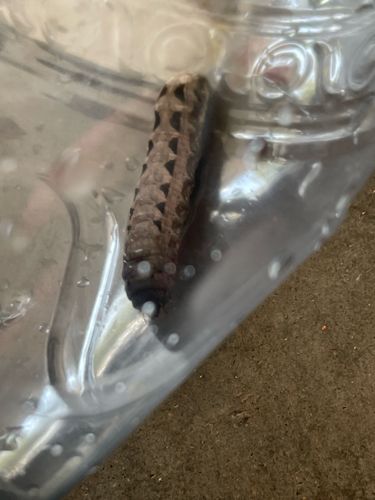Elephant Hawk-moth caterpillar
Scientific Name: Deilephila elpenor
Order & Family: Lepidoptera, Sphingidae
Size: Larvae (caterpillars) can grow up to 7-8 cm (2.8-3.1 inches) in length.

Natural Habitat
Gardens, woodlands, hedgerows, and other areas with its preferred food plants, often near water.
Diet & Feeding
Primarily feeds on willowherbs (Epilobium spp.), especially Rosebay Willowherb (Chamaenerion angustifolium), and also bedstraws (Galium spp.), particularly Lady's Bedstraw (Galium verum) and Hedge Bedstraw (Galium album).
Behavior Patterns
The caterpillar is known for its distinctive 'elephant's trunk' appearance when it retracts its head, inflating the segments just behind it. This, along with its large eye spots, can make it resemble a snake, deterring predators. They are mostly nocturnal feeders. When disturbed, they may rear up their front segments and retract their head to display the eye spots more prominently. They pupate in a cocoon on or just below the ground among leaf litter.
Risks & Benefits
No known risks to humans. As a pollinator in its adult moth stage, it contributes to ecosystem health. The caterpillars are an interesting part of the food web for birds and other predators, and their presence indicates a healthy local ecosystem.
Identified on: 9/20/2025